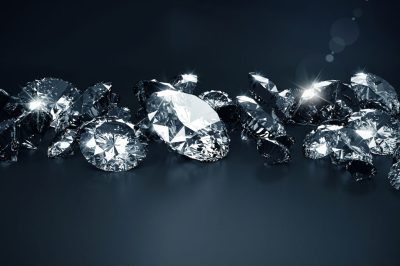Lab-grown diamonds have surged in popularity as a more ethical and environmentally conscious alternative to their mined counterparts. They are typically cheaper than natural diamonds primarily due to differences in production and supply chain costs. Creating diamonds in a lab is generally less expensive and more efficient than the extensive process of mining natural diamonds.
Unlike natural diamonds, the supply of lab-grown diamonds is also infinite since they can be made in a lab.
However, lab-grown diamonds are still expensive and some are even more expensive that natural diamonds of the same size. Why is this so? Let us take a look.
Quality And Grading
Similar to natural diamonds, lab-grown variants are evaluated and priced based on the 4 Cs of diamonds which are Cut, Color, Clarity, and Carat. Achieving higher grades in these categories often demands more precise and controlled production techniques, thereby increasing the cost.
When compared to a natural diamond of low-quality and grading (based on the 4Cs), the price of a lab-grown diamond of higher quality and grading will be higher since the cost to produce a higher quality lab-grown diamond is also higher.
This is why some lab-grown diamonds are more expensive than natural diamonds of the same size. The quality and grading of the diamonds are different.

Production Costs
Lab-grown diamonds are created using advanced technological processes that replicate the natural conditions under which diamonds form. The two primary methods, High Pressure High Temperature (HPHT) and Chemical Vapor Deposition (CVD), require specialized equipment, high energy consumption and a controlled environment which. The significant investment in technology, along with the cost of maintenance and operation, adds to the overall expense of producing these diamonds.
As technology improves, the price of lab-grown diamonds will also continue to drop.
Craftsmanship In Cutting & Polishing
After lab-grown diamonds are created, they still require expert cutting and polishing to bring out their brilliance and beauty. This is reflected in the final quality and grading of the diamond. Cutting and polishing lab-grown diamonds require skilled artisans and specialized tools. The whole process is similar to that of natural diamonds and significantly contributes to the final price of the diamond.

Market Demand
Since lab-grown diamonds are virtually indistinguishable from natural diamonds in appearance and properties, the price of lab-grown diamonds are also inevitably tied to the price of natural diamonds.
With natural diamonds having high market demand and high perceived value, the price of lab-grown diamonds will be inevitably high.
However, on top of lab-grown diamonds growing in popularity and acceptance, we are also seeing the increasing popularity of diamond alternatives such as moissanite. These factors together may lead to the price of lab-grown diamonds falling further.
Branding
Similar to other products, depending on which company you purchase the lab-grown diamonds from and the certification they undergo, the prices will differ greatly too.
Conclusion
The price of lab-grown diamonds remain high for various reasons. But with falling production costs due to technological advances and the rising popularity of diamond alternatives and diamond simulants along with lab-grown diamonds, it is quite possible we will get to enjoy lower prices for lab-grown diamonds in the future.








